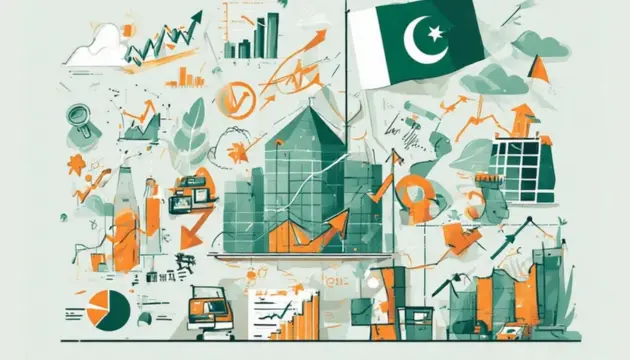ISLAMABAD: The National Economic Council (NEC) has approved a record Rs4.22 trillion development budget for the next financial year, aiming to boost the country’s economic growth rate to 4.2 percent from 2.7 percent this year.
This historic development outlay includes Rs1 trillion from the federal Public Sector Development Programme (PSDP), Rs2.869 trillion from the provincial Annual Development Plans (ADPs), and Rs355 billion for projects by state-owned enterprises (SOEs).
The approval came despite a 29 percent cut in the PSDP due to conditions set by the International Monetary Fund (IMF). The federal government has allocated Rs880 billion for the PSDP—20 percent less than the revised Rs1.1 trillion of the current year and 37 percent below the original Rs1.4 trillion. However, the government increased the PSDP total to Rs1 trillion by including Rs120 billion to be raised through a petroleum levy introduced last month.
The provincial development budget has seen a 22 percent jump compared to the current year’s Rs2.358 trillion. Punjab leads with a record Rs1.204 trillion allocation—10.6 percent higher than its current budget and 20 percent more than the federal share. This is the first time a province has surpassed the federal allocation.
Sindh follows with Rs967 billion, a 27 percent increase from this year’s Rs705 billion. Khyber Pakhtunkhwa will invest Rs417 billion—up 33 percent from last year’s Rs313 billion, though slightly reduced from the Rs440 billion it initially proposed. Balochistan plans to spend Rs281 billion on development, a 12 percent rise.
The NEC meeting was chaired by the prime minister and attended by all four provincial chief ministers, Deputy PM Ishaq Dar, and federal ministers for planning, finance, and information. PM’s adviser Rana Sanaullah was also present.
During the meeting, concerns were raised by the Sindh and KP chief ministers over their projects being left out of the federal budget. In contrast, the Balochistan chief minister thanked the federal government for special support. KP finance adviser Muzammil Aslam acknowledged the Centre’s financial constraints.
Despite fiscal challenges, the government allocated Rs50 billion for development schemes tied to coalition partners and increased funding for PML-N’s road projects. However, many sectors, including energy, food, water, Azad Kashmir, and Gilgit-Baltistan, will face funding cuts.
A separate special meeting is scheduled for Thursday between the prime minister and provincial chief ministers to discuss India’s recent actions affecting Pakistan’s water share and to devise a response plan.
The government has set an economic growth target of 4.2 percent for 2025-26, with expected contributions of 4.4 percent from agriculture, 4.3 percent from industry, and 4 percent from services. Inflation is projected at 7.5 percent.
ALSO READ >>> Metro stations in Lahore to be shifted to solar power
Agricultural growth will be supported by strong performance in major crops (6.7%), cotton ginning (7%), and livestock. Industrial growth is expected to rebound, especially in large-scale manufacturing (3.5%), mining (3%), construction, and energy sectors.
The services sector, which forms the largest share of GDP, is forecast to grow by 4 percent, driven by better performance in retail, transport, financial services, and real estate.
The government also aims to increase national savings to 14.3 percent of GDP, up from 14.1 percent, and total investment to 14.7 percent of GDP, from 13.8 percent. Public investment is expected to rise to 3.2 percent of GDP and private investment to 9.8 percent.
The focus of fiscal and monetary policy will remain on economic stability and consolidation, with inflationary pressures expected to stay moderate unless disrupted by global trade tensions or domestic tariff changes.











